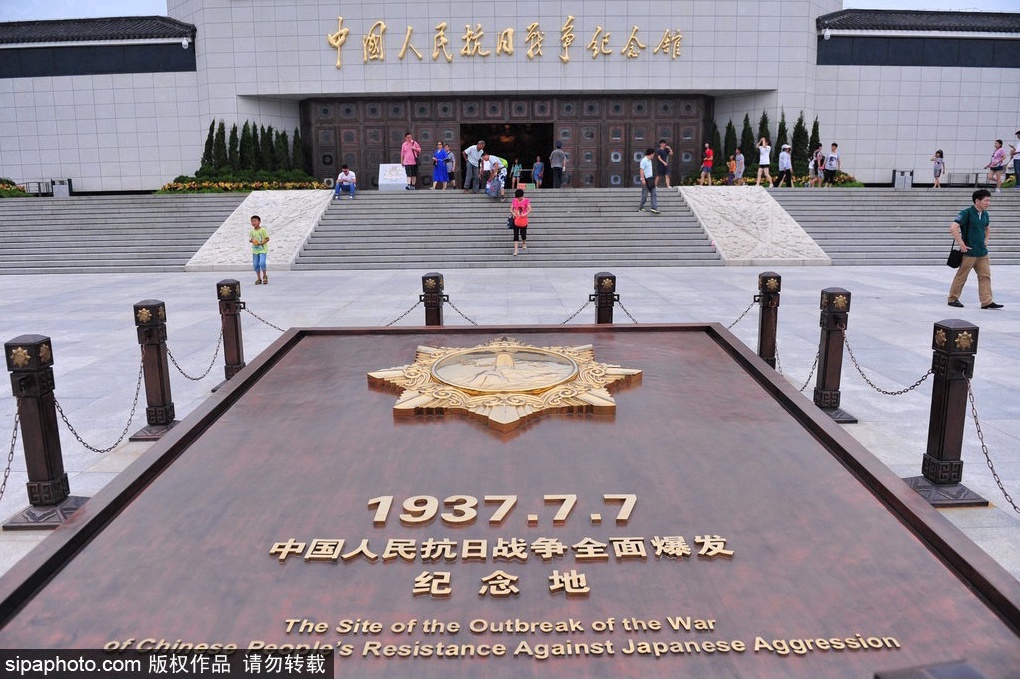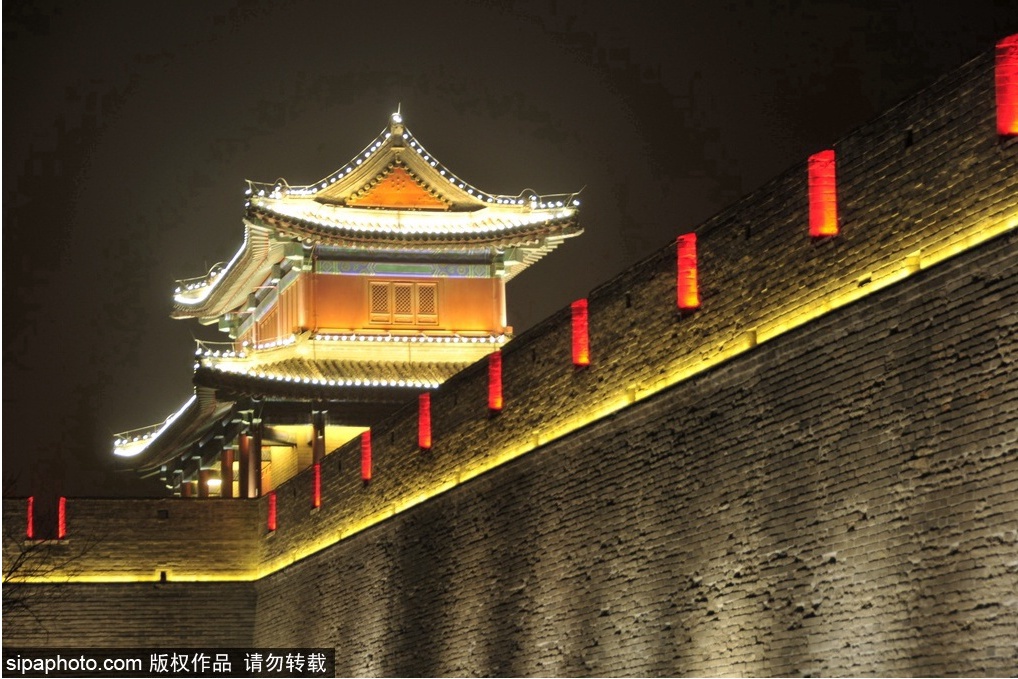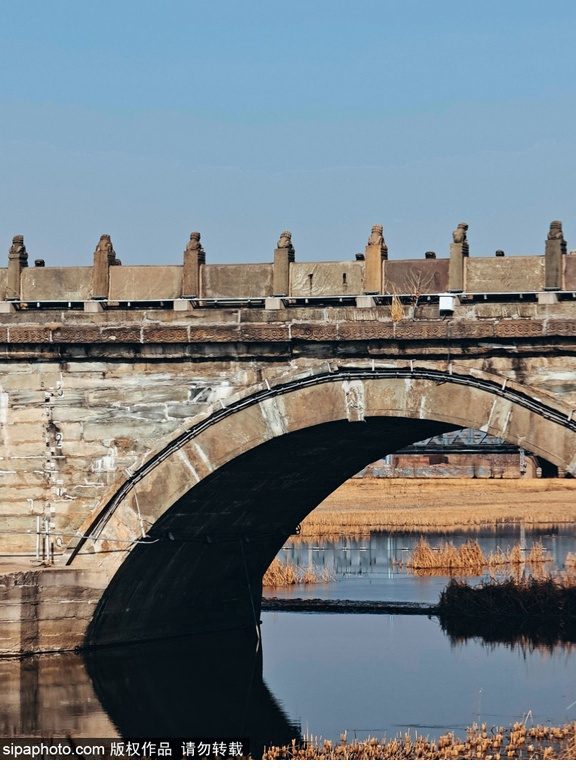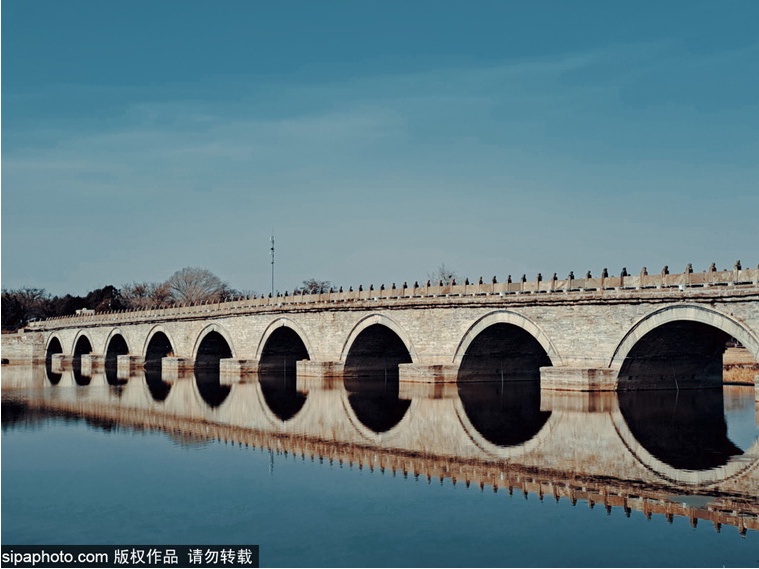This year marks the centenary of the founding of the Communist Party of China. The Beijing Municipal Bureau of Culture and Tourism has officially launched 10 boutique red tourism routes for citizens to explore red tourism resources and relive red memories. This article recommends the Red Blood Journey of Lugou Bridge (Marco Polo Bridge): Memorial Hall of Chinese People's War of Resistance against Japan, Wanping Ancient City, and Lugou Bridge (Marco Polo Bridge).
Built in 1987, the Memorial Hall of Chinese People's War of Resistance against Japan is the only large-scale comprehensive special memorial hall in China that fully reflects the history of the great War of Resistance against Japan of the Chinese people. Wanping Ancient City is the only well-preserved two-door fortress in North China today. Lugou Bridge (Marco Polo Bridge) is the oldest and longest existing 11-arch stone bridge in North China. "Lugou Xiao Yue" is one of the eight famous scenic spots in Yanjing (ancient Beijing), which has attracted many tourists for hundreds of years.
Memorial Hall of Chinese People's War of Resistance against Japan

Built in 1987, the Memorial Hall of Chinese People's War of Resistance against Japan is the only large-scale comprehensive special memorial hall in China that fully reflects the history of the Chinese people's great War of Resistance against Japan. Every year on July 7th, memorial activities about War of Resistance against Japan is held here. It is an important place to remember history and carry out patriotic education.
The Memorial Hall is mainly composed of preface hall, exhibition hall, semi-landscape painting hall, and auxiliary buildings, which is a group of buildings with rich national characteristics and modern style. The overall space design is simple, and the color is deep and solemn, which better highlights the architectural features.
The Memorial Hall exhibits more than 5,000 precious historical relics and photos during 14 years from the September 18th Incident in 1931 to the victory of the Anti-Japanese War in 1945. The relics and manuscripts of major events and important historical figures are the main content, and some cultural relics became orphans. Thousands of important documents, books and periodicals, archives and materials of War of Resistance against Japan period are collected.
The exhibition is divided into four parts: "Comprehensive Hall", "Japanese Atrocities Hall", "People's War Hall" and "Anti-Japanese Heroes Hall". The exhibition forms are huge photos, image charts and on-site restoration, etc., and the combination of cultural relics and modeling methods is used to form a three-dimensional space, which leaves the audience with a strong impression. For example, "mine warfare landscape", "tunnel warfare landscape", "water guerrillas" and other three-dimensional models have achieved good effects.
The display of semi-landscape painting adopts the technology of sound and light changing scene, which makes the display art reach the current advanced level and reproduces the fighting scene of "July 7 Incident". The theme sculpture in the heroic hall has shocked the soul, with the meaning of unyielding spirit of great heroes.
The great victory of the Chinese people's War of Resistance against Japan has re-established China's status as a major country in the world, opened up bright prospects for the great rejuvenation of the Chinese nation, and started a new journey for the ancient Chinese phoenix to rise from the ashes. This great victory is worthy of being remembered by the Chinese people as well as by the people of the world forever.

Address: No.101 Chengnei Street, Lugou Bridge, Fengtai District, Beijing
Time: 9:00-16:30 Tuesday to Sunday
Wanping Ancient City

Wanping Ancient City, which stands on the east side of Lugou Bridge, is the only well-preserved two-door fortress in North China. Together with Lugou Bridge, it was listed as the first batch of national key cultural relics protection units in 1961, and was rated as a national red tourism classic scenic spot in 2005 .
Wanping Ancient City was founded in 1638 and completed in 1640. It was built by Wu Jun, eunuch of Imperial Horse Department in the Ming Dynasty. It was originally named Gongbei City, and changed to Gongji City in the Qing Dynasty. On July 7th, 1937, Japan launched the "July 7th Incident" in Lugou Bridge, and Wanping Ancient City became the historical witness. Up to now, the bullet marks of the Japanese bombardment still remain on the city wall.
Today's Wanping Ancient City has undergone many repairs. Buildings including Wanping County Government, Lugouyi, Xinglong Temple and Gongjiying have been rebuilt in Wanping Ancient City, and drama buildings have been added as a platform for displaying folk culture in old Beijing. The rebuilt Wanping Street has become an antique pedestrian street of the cultures in the Ming and Qing Dynasties.
Wanping Ancient City is not only a pocket town, but also a majestic gateway. Wanping Ancient City, different from ordinary cities, is actually a bridgehead, guarding the Lugou Bridge which is the main traffic route from the south to Beijing. Now Wanping Ancient City is waiting for tourists from all over the world to come for sightseeing.

Address: Dongcheng North Street, Lugou Bridge, West Fifth Ring Road, Fengtai District, Beijing
Bus route: Take bus No.896, 983, 952 at Xidaokou Station and get off at Anti-Japanese Sculpture Park Station, then walk 837 meters to Wanping Ancient City.
Lugou Bridge (Marco Polo Bridge)

Lugou Bridge is located on Yongding River, 15 km southwest of Beijing. It was built in the 29th year of Jindading (1189) and completed in the third year of Jinmingchang (1192). It has a history of more than 800 years, and was originally called Guangli Bridge. According to the old news, the water of Lugou river was black and dirty. Yan people regarded black as “Lu”, and this bridge was named "Lugou Bridge" because it crosses Lugou River.
Lugou Bridge was approved by the State Council as the first batch of key cultural relics protection units in China in 1961. In 2005, it was rated as a classic scenic spot of international red tourism. War of Resistance against Japan, which lasted for eight years, started with the July 7th Incident. Lugou Bridge is a bridge of history, art and hero.
Lugou Bridge is the oldest and longest existing 11-hole arch stone bridge in North China. It is 266.5 meters long and 9.3 meters wide. There are 10 piers and 11 bridge openings. There are 501 beautifully carved stone lions. There are white marble stone tablets at the east and west ends of the bridge, and the "Lugou Xiao Yue" tablet in the east. "Lugou Xiao Yue" is one of the eight famous scenic spots in Yanjing (ancient Beijing), which has attracted Chinese and foreign tourists for hundreds of years.

Opening hours: 8:00-17:00 (latest admission: 16:30)
Tickets: 20 RMB/adult (visitors can make an appointment to buy tickets on WeChat official account in Lugouqiao Cultural Tourism Zone in advance)



